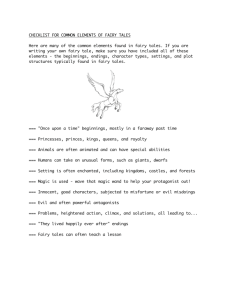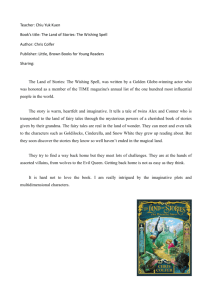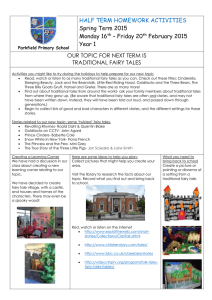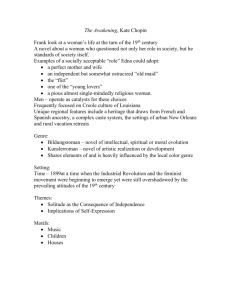The Father of Fairy Tales: Charles Perrault
advertisement
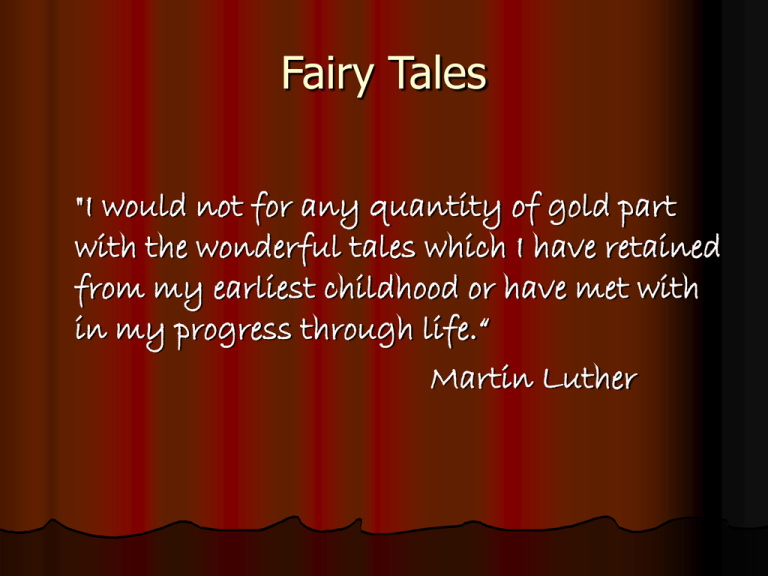
Fairy Tales "I would not for any quantity of gold part with the wonderful tales which I have retained from my earliest childhood or have met with in my progress through life.“ Martin Luther A bit o’ history… The unwritten lore of a culture, passed on from one person to the next by word of mouth- the oral tradition- STORYTELLING! Proverbs (moral) Riddles Songs Myths (creation stories) Legends (historical) Tall tales (exaggeration), and.. Fairy Tales! Fairy tales are not just for children, but also for "children of a larger growth," who are not ashamed to confess. What makes a Fairy Tale a Fairy Tale? In America, the “Disney-fied” versions: Start with “Once upon a time” End with “and they all lived happily ever after” Villains: witches, ogres, giants Damsels in distress; princes as rescuers Forests, castles However… As we explore the world of the true fairy tale we will learn that fairy tales: Occur in the realm of “faerie”- there is some type of magical element (but not always!) Wide range of plots and characters Can sometimes be quite scary Fairy Tale Tidbits Fairy tales are based on old, old stories which can be traced back thousands of years Written fairy tales over 3000 years old The term “ogre” comes from a variation on the name of a tribe that was very cruel to infants The Queen of the Fairies: Marie-Catherine D'Aulnoy Marie katarine dull nwa Published Les Contes des Fees (The Tales of Fairies) Hosted a French woman’s salon, i.e. “Ladies Night Out” None of her tales are popular today, not for children Goldilocks first mentioned- not 3 Bears! The Father of Fairy Tales: Charles Perrault Mother Goose Tales Published in 1697 under the name of his son Pierre, Stories or Tales from Times Past, with Morals: Tales of Mother Goose included eight stories: Sleeping Beauty in the Wood Little Red Riding Hood Bluebeard Puss in Boots The Fairies Cinderella Ricky of the Tuft Little Tom Thumb NOT original stories of Perrault’s, but his version of folktales he had heard throughout his travels Other then the Bible, the most popular book ever Brothers Grimm have some of the same stories, but their own version Beauty and the Beast 1740: Madame Gabrielle de Villeneuve writes a 362 page version of Beauty and the Beast This version is not intended for children with its many storylines, length, and subject matter. 1756: Madame Le Prince de Beaumont publishes her own considerably shorter version of Beauty and the Beast. This version is the most well-known and copied. It is written for a young audience. This is the first example of a literary fairy tale being written specifically for children. And they all lived happily ever after. THE END For a storynory story: http://storynory.com/category/perrault/ Internet Sites The Tales of Mother Goose by Charles Perrault. A Project Gutenberg ebook. Perrault's Fairy Tales with illustrations Les contes de Perrault . A French-language site featuring Perrault's tales. http://storynory.com/category/perrault/ Fear of the consequences which happen to those who do bad deeds! Sir Walter Scott: “The mythology of one period would appear to pass into the romance of the next, and that into the nursery tales of subsequent ages” Max Muller: “The gods of ancient mythology were changed into the demigods and heroes of ancient epic poetry, and these demigods again became at a later age the principal characters of our nursery tales.”


